The plan for today was to visit Sand Pond Conservation Area, on the Arkansas line in Ripley County. I took the long way around, going through Poplar Bluff instead of Doniphan, because the road is much better and I could stop for breadfast (I love Hardee’s blueberry biscuits!) This detour of sorts turned out to be fortuitous. Almost immediately after turning on MO 142 to head towards Naylor, I saw this sign beside the road.
I hadn’t realized I was going right by Corkwood, but I wasn’t passing up a chance to stop, so I slammed on the brakes and since there was no traffic coming, backed a couple of hundred yards to the access road. After a short drive, I came to a parking area which thankfully had a bulletin board with a site map. I took off down the trail, through an old field and headed into the timber. Unfortunatley, I quickly hit a dense band of downed trees and branches, likely from the devastating ice storm from a couple of winters ago. I picked my way through only to find the area to be flooded.
So, I had to content myself with working along the edge of the flooded timber and then around the edges of the old field. I did find some interesting things, the first being a scattered stand of Hercules Club or Devil’s Walking Stick (Aralia spinosa,)
a Hop Hornbeam (Ostrya virginiana) with catkins
and a Sugar Maple (Acer saccharum) in flower.
I also found both American Elm (Ulmas americana )
and Slippery Elm (Ulmas rubra.)
Both had already flowered and were setting seeds.
Back in the old field, I found several damsel flies.
I have no idea what species this is. Other than the clubtails (Gomphus,) I’m pretty good at identifying dragonflies, but all of the blue damsels look alike to me and I’ve pretty much given up hope of identifying them to the species level.
Several dragons were also flying about and I finally got one to sit still for a portrait.
This one was new to me and I wasn’t able to ID him in the field, but later, with the help of Bugguide, pegged him as a Common Baskettail (Epitheca cynosura.)
I almost missed it, but hiding in the weeds was a Henry’s Elfin (Callophrys henrici.) This was another new species for me, so I was off to a good start.
The rest of the field only turned up some henbit (Lamium amplexicaule)
and a stand of wild plum (Prunus sp.)
With that, I was back at the truck so I headed onward to Sand Pond some 10 miles away. Sand Pond is the only location in Missouri that Pondberry (Lindera melissifolia) occurs and I was hoping to find it in flower. I had printed a site map of area, but had left it at home (Doh!) and none of the parking areas had any available, so I was effectively working blind.
Picking a direction at random, I left the truck and soon found an old house site with a large thicket of Quince (Cydonia oblonga) in bloom.
Quince was apparently a fairly commonly planted fruit tree in times past since I’ve found it growing at several abandoned home sites.
Not far from the quince thicket was some open, sandy ground with a number of Goatweed butterflies (Anaea andria.)
Then, once again, I ran into flooded timber. The whole area was thickly grown and it seemed like everything had thorns. Stumbling onto the remains of an old road seemed like divine intervention since it provided much easier walking.
I had only been on the old road for a few seconds when I heard something in the leaves and I knew it was a snake. I moved quickly towards the noise and was rewarded with this site:
The snake is a Racer, probably the Southern Black subspecies (Coluber constrictor priapus) and his lunch is a Green Treefrog (Hyla cinerea.) Mr. Snake was quite upset with me, rattling his tail against the leaves to make me think he was a rattlesnake. I kept shooting photos and he eventually spit the frog out and glared at me.
Not wanting to cheat him of his lunch, I moved on. Here is a wider shot to give a better idea of the snake’s overall coloration.
That brings me to the end of the day, but I have two more photos I want to show you. The first was taken along the edge of the old field at Corkwood and the other was near the flooded timber at Sand Pond. I have not been able to identify either, even with the help of my “tree guys.” If anyone can shed some light on these, please let me know!

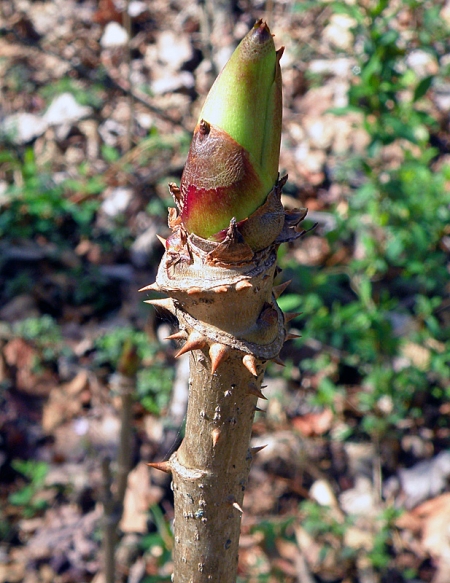
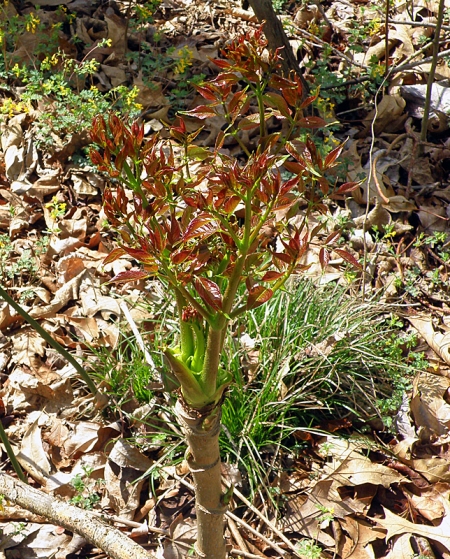
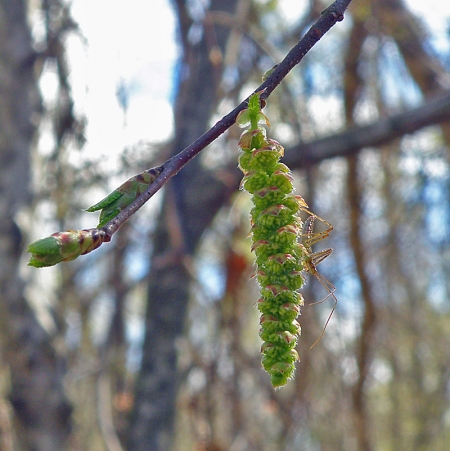
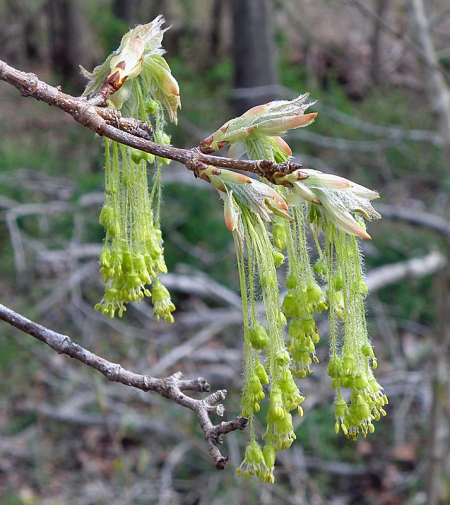
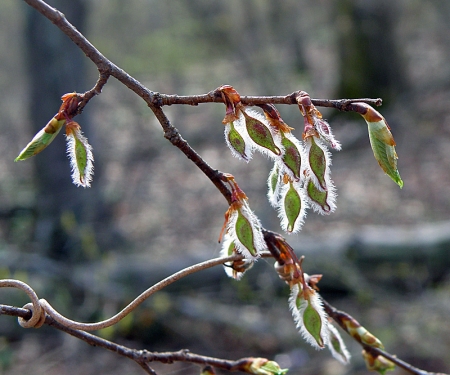
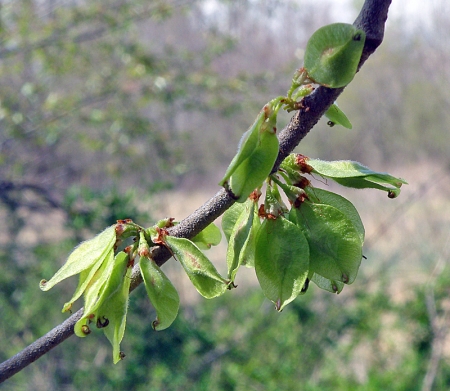
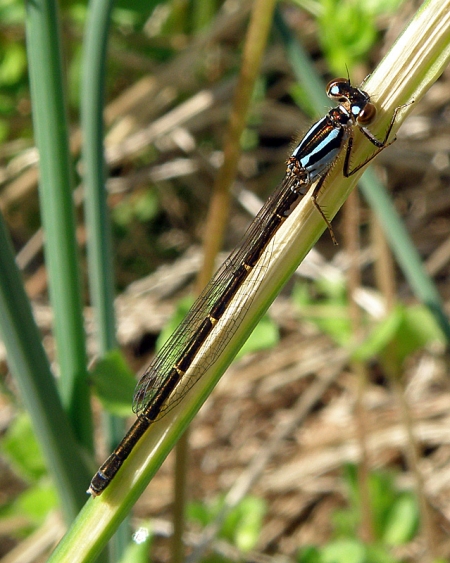

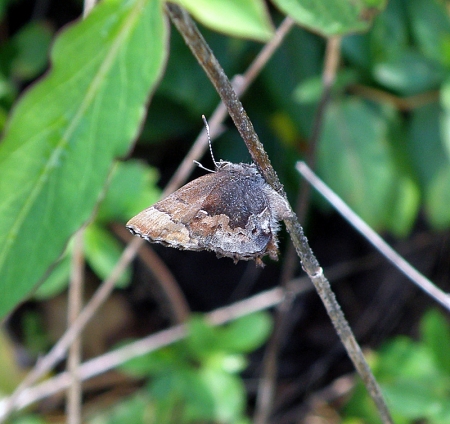
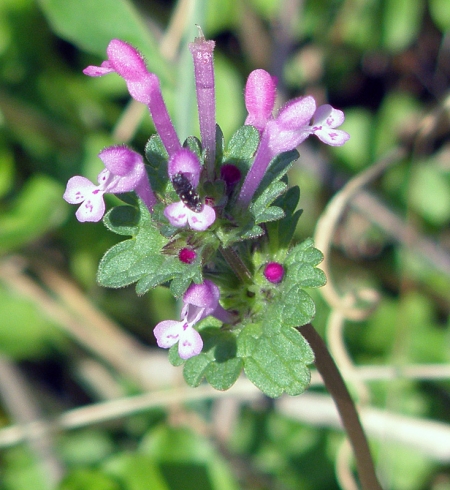

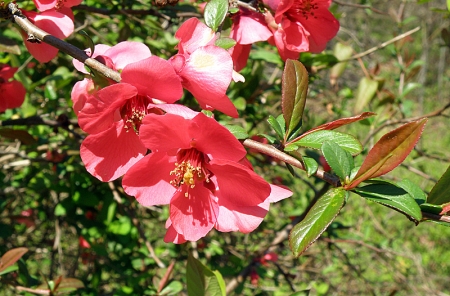
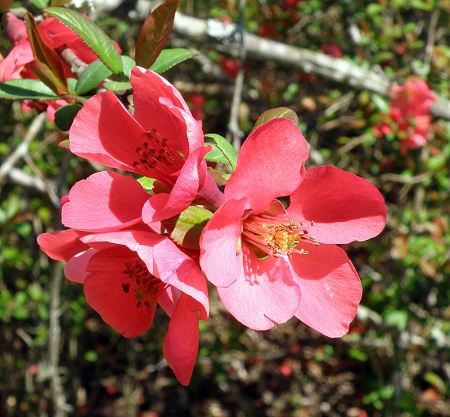
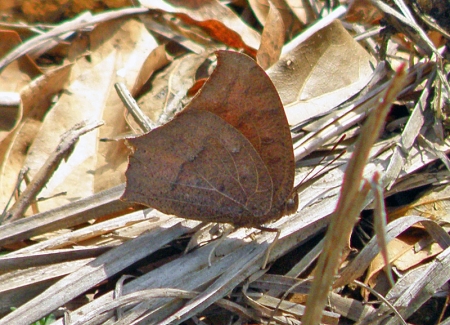
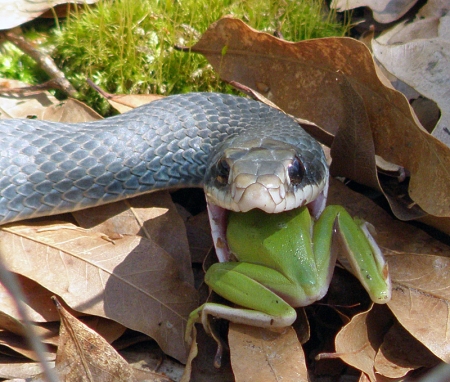
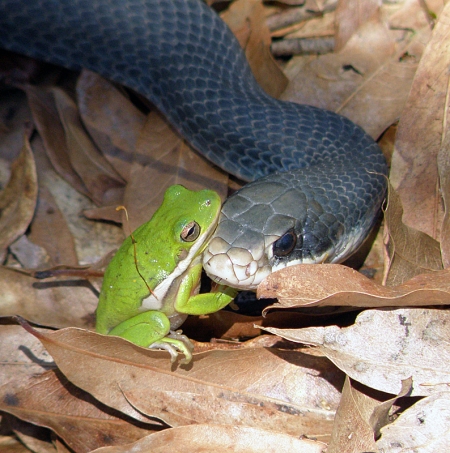
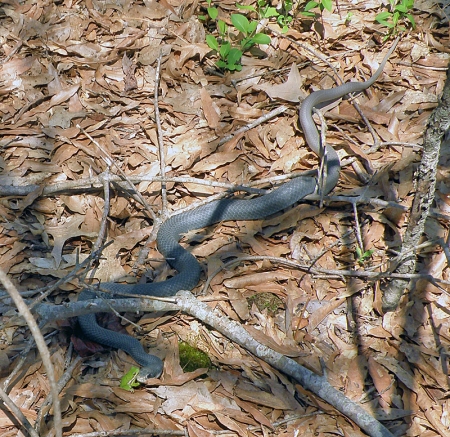
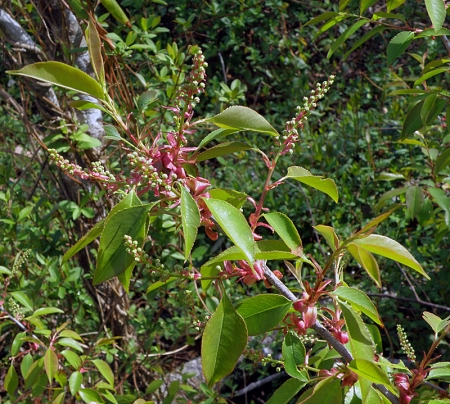
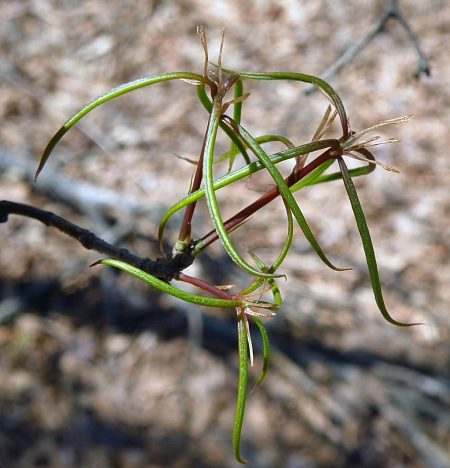
I’m not certain, but I think your first unidentified plant is pokeweed.
Thank you for your blog. It is very helpful!